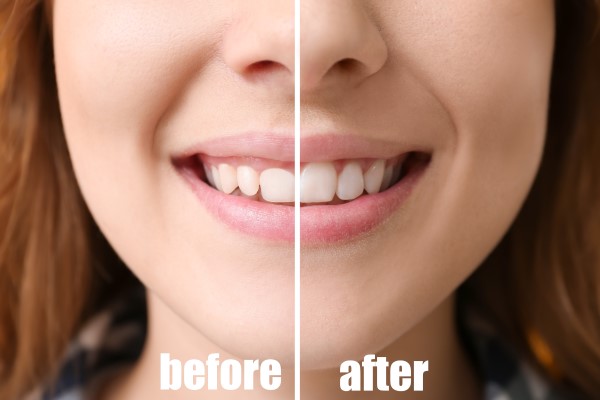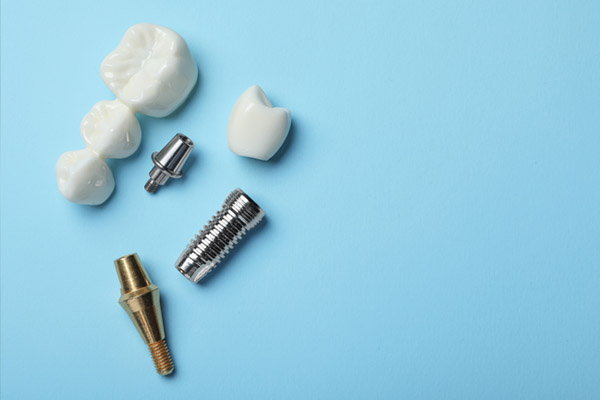Gum Lift Procedure for Receding Gums

You might need a gum lift procedure if you have receding gums. The condition is often a symptom of periodontal disease. Also known as gum disease, periodontal disease is caused by bacteria getting into gum tissues and infecting them. This typically occurs as plaque and tartar make their way below the gum line. These substances contain oral bacteria and acids they produce.
The immune system reacts to the bacterial invasion by sending antibodies to fight off the infection. The result is chronic inflammation that leads to gum tissues pulling back from teeth roots. Periodontal disease is more likely to affect people over the age of 30.
Gum recession is one of the first symptoms of gum disease to show up, and it leaves teeth roots vulnerable to acids in the mouth. Teeth roots do not have enamel to protect them against acid erosion. Instead, they are covered with cementum, which is more prone to decay.
Leaving gum recession unaddressed can lead to teeth roots being decayed to the point teeth start falling out of the mouth. Gum tissues pulling back on teeth also ruin the appearance of teeth, making them appear longer. The gum lift procedure covers exposed teeth roots with gum tissues, protecting them from acid erosion and restoring their aesthetics.
Treating receding gums with the gum lift procedure
Gum lift therapy is one of the newer ways to treat receding gums. The traditional way of addressing receding gums takes longer to perform and is more invasive. This leads to a lengthy recovery period that could last weeks. The gum lift procedure provides a faster, less invasive way to fix receding gums. It comes with a shorter recovery window than traditional gum surgery.
Unlike traditional gum surgery, which involves making significant incisions, gum lift therapy is performed through a single, tiny entry point. Local anesthetics are administered at the start of the treatment, and it is typically over in an hour or two. The patient's entire mouth is usually treated in a single session. Recovery from gum lift therapy is typically short, and over-the-counter painkillers can typically be used to manage any discomfort or inflammation caused by it.
The procedure
Gum lift therapy typically starts with the patient's teeth being cleaned and prepared for the procedure. A local anesthetic is then injected into the areas that will be worked on to numb them. The periodontist then makes an incision less than a tenth of an inch in the patient's gums.
The periodontist then frees the gum tissue and manipulates it to cover teeth roots. If the patient needs gum grafts as part of their treatment, the grafting material is passed through the same incision. Once the affected teeth roots have been treated, tiny sutures might be used to stabilize the position of the patient's gums. Let us go over the answers to some of the questions you might still have about gum lift treatments:
Frequently asked questions (FAQs) about gum lift therapy
1. How many appointments are needed to complete gum lift treatment?
Gum lift procedures typically involve treating the patient's entire mouth during a single visit. Patients with sensitive mouths can break the treatment into multiple sessions, but that is rarely necessary. Additional follow-up visits are usually scheduled after gum lift therapy to monitor the patient's gum tissues as they heal.
2. What are the side effects of gum lift therapy?
Gum lift surgery counts as minor oral surgery, but it is not as invasive as traditional gum surgery. Patients typically experience some swelling and discomfort after the procedure. Over-the-counter medication is often enough to manage these side effects. Some patients also report increased teeth sensitivity following a gum lift. Most of these side effects go away in a few days. Getting lots of rest and avoiding strenuous activity after gum lift therapy helps to speed up the recovery process.
3. How fast can I return to my normal routine?
Patients are typically cleared to return to their regular routine about four days after the procedure. However, arduous activity should be avoided for about 10 days following gum lift therapy.
4. Do patients need restorations after gum lift surgery?
No, gum lift surgery does not require placing restorations on a patient's teeth. However, restorations might be recommended if the current condition of the patient's teeth requires them. That way, the patient's smile is restored while their gum tissues are pushed back to their natural positions.
We are here to help
Our periodontist treats issues like receding gums and a gummy smile with gum lift therapy. Give us a call or stop by our Palm Beach Gardens clinic to set up an appointment.
Request an appointment here: https://corderoperiodontics.com or call Rafael E. Cordero, DDS PA at (561) 763-9221 for an appointment in our Palm Beach Gardens office.
Check out what others are saying about our dental services on Yelp: What Is Gum Contouring in Palm Beach Gardens, FL.
Recent Posts
Gum recession is one of the common signs of gum disease and is usually treated by a periodontist. It is a situation where the roots of the teeth are exposed due to loss of gum tissues or retraction of the gums from the tooth crown. The condition is prevalent in adults above the age of…
Gum disease treatment is necessary to prevent your symptoms from worsening. Your periodontist will assess your gums first and then discuss the treatment options with you. Knowing when to see this dental care provider can help you make informed decisions regarding your procedures. Here are the details on when to see this dentist for gum…
A gum recession treatment can help you regain your smile and dental health. Receding gums can make you conscious about the way you look. It can also cause dental instability and sensitivity. Seeing a periodontist for your gum recession treatment can help you get the results you need.A general dental exam can spot gum recession.…
Dentists talk about the effects of gum disease from the time patients are young. There are good reasons for this, as the disease can have significant impacts on a person’s oral health. The disease is common among children, teens, and adults. Fortunately, it is highly preventable. For the most part, you can take some daily…


